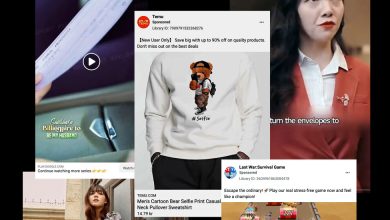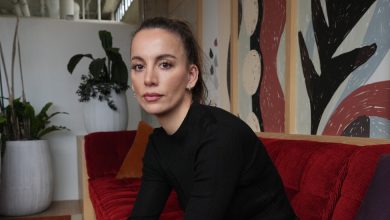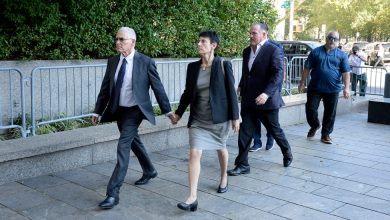Key takeaways from the sixth week of the Elizabeth Holmes trial.

SAN JOSE, Calif. — Was Theranos a small start-up struggling to meet the demands of working with big, sophisticated and powerful corporations? Or was Elizabeth Holmes, the former chief executive of the blood testing company, misleading and deceiving those corporations to get money?
That debate was at the heart of testimony in the sixth week of Ms. Holmes’s fraud trial in San Jose. She is charged with 12 counts of fraud and conspiracy to commit fraud. Her partner in business and romance, Ramesh Balwani, was also charged and will be tried separately next year. Both have pleaded not guilty.
Here are the takeaways from this week’s proceedings:
‘Discouraged’ retail partners
Steve Burd, a former chief executive of Safeway, testified that Ms. Holmes had led him to believe that Theranos’s machines could conduct hundreds of blood tests quickly, accurately and cheaply with a drop of blood. Mr. Burd said that he had been enticed by the potential new line of business and that Safeway had struck a partnership to put Theranos machines in its grocery stores, spending $275 million to revamp the stores to accommodate the testing centers.
But in emails, Mr. Burd became increasingly frustrated with Ms. Holmes and Theranos.
“I want to help, but you are making it difficult,” he wrote in one. In another, after noting that he could recall getting discouraged just once in the last 62 years, he added: “That said, I am getting close to my second event.” The subject of another was simply, “Becoming Discouraged.” The partnership fell apart after repeated delays from Theranos, Mr. Burd testified.
Wade Miquelon and Nimesh Jhaveri, two former Walgreens executives, offered a similar tale. As part of a partnership deal, Walgreens agreed to pay Ms. Holmes’s company an “innovation fee” of $100 million and invested $40 million in securities that could be converted into equity.
Walgreens stopped offering Theranos tests in 2016, and two years of test results were ultimately voided.
A falsified report
The prosecution introduced one of the incriminating documents previewed at the trial’s start.
In opening statements, Robert Leach, an assistant U.S. attorney leading the prosecution, said Theranos had created a 55-page report that prominently displayed the logos of pharmaceutical makers like GlaxoSmithKline, Pfizer and Schering-Plough and that appeared to validate Theranos’s technology. Theranos used the report to solicit investments.
One problem: The pharmaceutical companies had not written, approved or agreed with the conclusions in the report, Mr. Leach said. One page misspelled the word “institute.”
Mr. Miquelon said Walgreens had reviewed the document as part of its diligence on Theranos and had believed that pharmaceutical companies approved its technology.
“My assumption was that both parties agreed to what was written,” Mr. Miquelon said of the report.
A figurehead lab director
Jurors recently spent six days hearing from the former Theranos lab director Adam Rosendorff, who testified about his work on highly technical elements of the blood testing. The job required long hours, intricate knowledge of the science behind the tests, and frequent communication with executives, doctors and patients, he said. Dr. Rosendorff left over Theranos’s lab practices and sent damning information to The Wall Street Journal.
He was replaced by a dermatologist.
Dr. Sunil Dhawan, who met legal requirements to be a lab director but had no specialization in pathology or laboratory science, was recruited for the role by Mr. Balwani, who had been his patient for almost 15 years.
Dr. Dhawan testified this week that between November 2014 and the summer of 2015, he spent a total of five to 10 hours doing work for Theranos and went into its Silicon Valley office twice. He said he had never interacted with patients, physicians or Theranos lab employees.
Lance Wade, Ms. Holmes’s lawyer, argued that Dr. Dhawan had been “there as needed” and delegated his responsibilities to Theranos’s full-time employees.
Media matters
In a separate Zoom hearing on Thursday, Ms. Holmes’s lawyers opposed two reporters who covered Theranos.
In one case, Magistrate Judge Nathanael Cousins granted John Carreyrou, the reporter who first exposed Theranos’s problems in The Wall Street Journal, access to the courtroom. Ms. Holmes has listed Mr. Carreyrou as a potential witness, which would normally prevent him from hearing testimony.
His lawyer argued for an exception, saying Ms. Holmes had listed Mr. Carreyrou to keep him from the courtroom out of “bad faith” and “animus.” John Cline, Ms. Holmes’s lawyer, declined to say whether the defense would call Mr. Carreyrou as a witness.
Separately, Judge Cousins ordered that Roger Parloff, a former Fortune reporter, would not have to turn over his reporting notes to the defense. Mr. Parloff wrote the first magazine cover story on Ms. Holmes, as well as a follow-up article saying she had misled him.
Mr. Cline said the defense wanted to use Mr. Parloff’s notes to show the jury that he was biased. Judge Cousins called the defense’s moves “a fishing expedition.”





